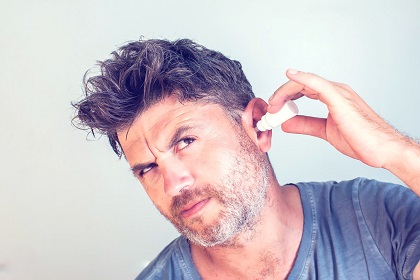Search
Related Articles
“Huuu…snort!…..huummm…gasp!” Your snoring echoes and booms through the night—much to the agony of the person being kept awake beside you. Our ENT doctor would like to remind us that: Apart from affecting the sleep of our families and housemates, snoring could also have a big impact on our health, so we must be on guard when it comes to obstructive sleep apnea.
What is OSA?
Obstructive sleep apnea (OSA) is the most common form of sleep apnea. It occurs when the upper respiratory tract becomes blocked, making breathing more shallow or stop, repetitively interrupting sleep. In serious cases this could happen 30 or more times per hour and lead to high blood pressure, heart attacks, brain problems, or increased risk of accidents.
What are the symptoms?
• Snoring (most common symptom)
• Fatigue or feeling tired during the day
• Headaches in the morning
• Dry mouth or sore throat when you wake up due to breathing through the mouth
• Restlessness, screaming, sleep talking, convulsing, hearing sounds, having hallucinations, or sleep walking while asleep
• Sexual dysfunction
• Night sweats
• Trouble concentrating, forgetfulness, and depression
• Waking up suffocating or gasping due to difficulty breathing
Who gets it?
OSA is more common in males above 30. People who may be more likely to have OSA are those who may:
• Be obese or overweight with a BMI of >25
• Have a thick neck
• Have small airways in their nose, throat, or mouth
• Have enlarged tonsils
• Have a large tongue
• Smoke
• Have diabetes
• Have high blood pressure
• Be at risk of heart failure or stroke
• Use long-term sleep medicine
• Upper respiratory tract inflammation
How is it diagnosed?
You can have your sleep monitored by wearing a device known as a polysomnography (PSG) as you sleep. Once finished, it will generate a diagnostic report. Your doctor will interpret the results to see if you have OSA. Standard diagnosis includes oxygen saturation, thoracic motion, and nasal airflow. Complex diagnosis may include ECG, EEG, or EMG.
How is it treated?
• Life intervention and avoiding working too strenuously
• Using a ventilator applying continuous positive airway pressure (CPAP)
• Surgery in some cases
Treatment can significantly improve sleep quality and reduce the possibility of complications associated with cardiovascular disease and diabetes.
How can it be prevented?
• Quit drinking
• Exercise
• Dieting
• Sleeping on your side
Are you concerned that you might have OSA? We provide sleep monitoring services at home. Visit Jiahui Health for a consultation with our ENT doctor for more information.
References
1. The National Sleep Foundation, Sleep Apnea (March 21, 2017)
https://sleepfoundation.org/sleep-disorders-problems/sleep-apnea MedlinePlus,
2. Mayo Clinic, Sleep Apnea (March 21, 2017)
http://www.mayoclinic.org/diseases-conditions/sleep-apnea/basics/definition/CON-20020286?p=1
Click the link for more information on Sleep Medicine Clinic Clinical Service
Click the link for more information on E.N.T Clinical Service
- Previous: Instructions after Completing Radiation Therapy
- Next: The Best Foods to Eat When You Have Breast Cancer









